

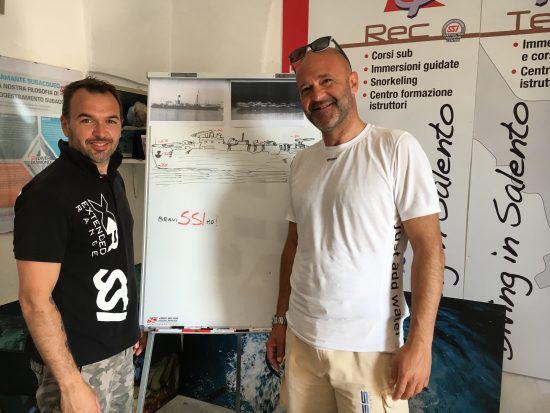
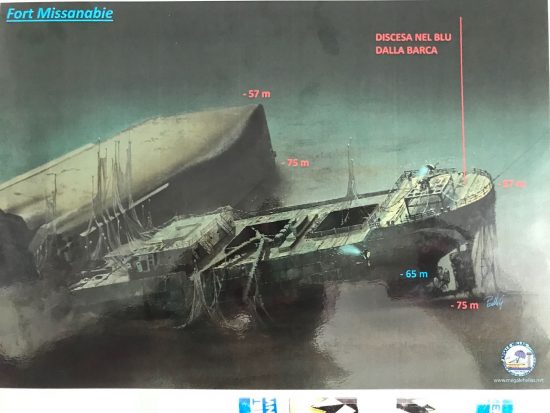
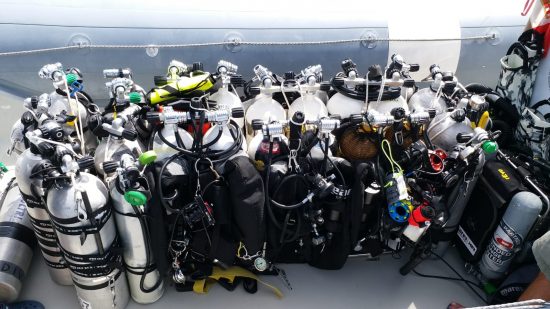
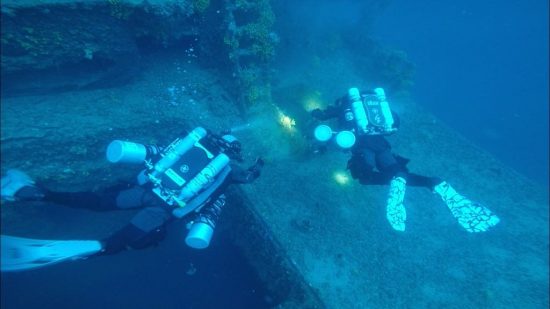
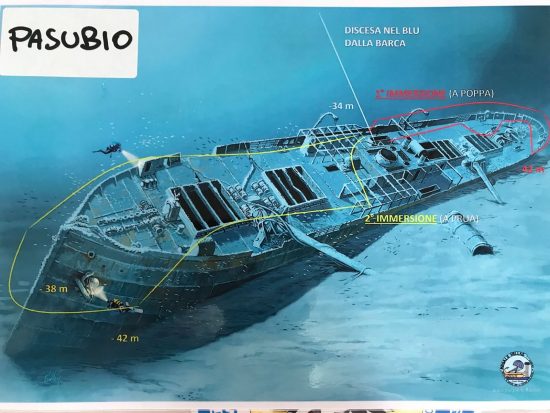
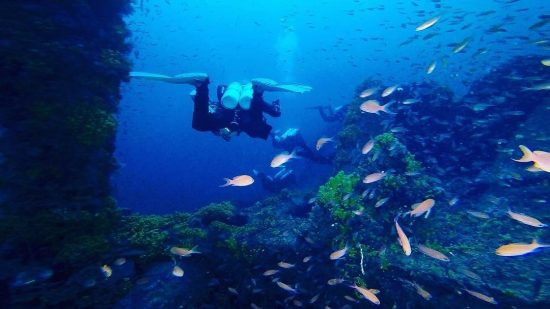
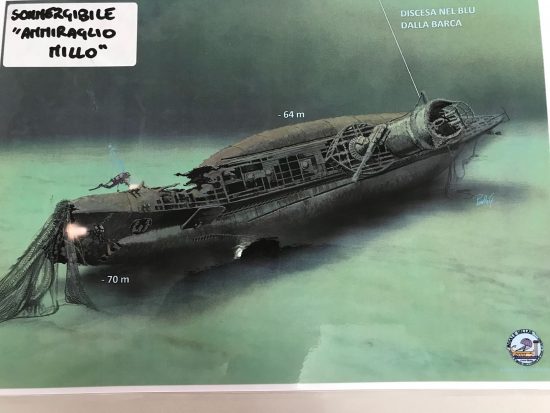
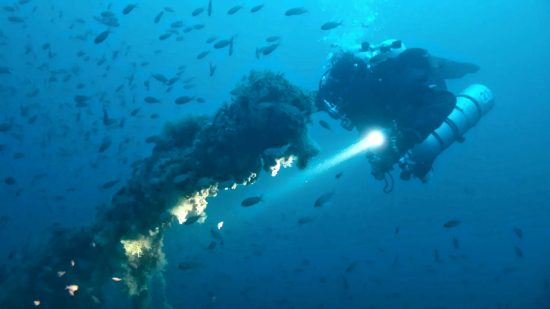
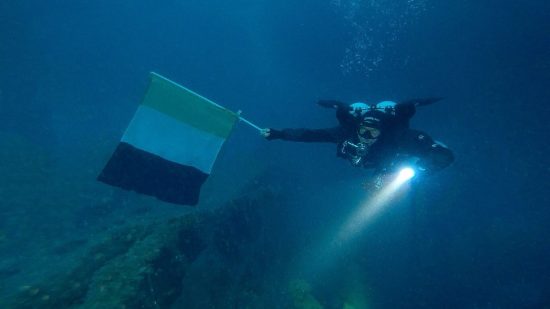
On Monday morning we leave for the third stop. The destination is Marina di Gioiosa Ionica, in Calabria. In Stefano’s van, filled with divers and dive gear, we cross the Ionian coast in a never-ending six hour trip. We then finally meet Tony Scontrino, the last member of the team to join us.
The next morning we meet on time at the Diving Megale Hellas dive center run by Roberta Eliodoro who will give us the necessary support for the next three dives.
The first planned dive is on the wreck of Fort Missanabie, an armed English cargo ship hit by a missile in May 1944 off the coast of Roccella Jonica.
We arrive at the dive spot after a ten-minute boat ride. The heat is sweltering and the sea is slightly choppy. On the surface a strong current tells us that both the descent and resurface will take a lot of attention and diligence. Fortunately, as we descend little by little, the current decreases, allowing us to explore the seabed easily.
The boat sits on the sand at 78 meters deep and is broken in two pieces which, balanced on the seabed, form a V. Half of the stern is in sailing trim whilst half of the bow is upside down. Visibility is acceptable and allows us to admire the impressive view of the wreck whilst we glide.
We cross the upper part of the stern, armed with cannons which rise towards the light, to then descend to the maximum depth to see its majestic bow thrusters slightly raised from the seabed. We continue along the starboard side to penetrate between the metal sheets and I pause to see them covered with a myriad of shrimp. Some moray eels and a pair of large forkbeards dwell in the half-light.
On reaching the point where the boat is broken, we continue towards the prow to see the anchors, also overturned, in an unnatural position.
Our bottom time was running out and we decided to return towards the stern, crossing the stretch of sand which links it to the prow. It’s a stretch of a few meters which is manageable thanks to the strobe light which we had positioned on the descent line.
In the afternoon the wreck of the Pasubio awaits us, a cargo ship found on the sandy seabed on its left side at 44 meters deep. In 1943 it was navigating the Ionian coast off Calabria when, near to Roccella Ionica, it was hit by a missile from a British submarine.
We reach the wreck on the right-hand side of the prow at a bathymetry of 35 meters, near to one of the two derricks, both broken. We continue our exploration of the deck, penetrating the hold, to arrive at the stern where we chance upon the ship’s helm and, lower down, propeller blades.
Wednesday ends in style with the submarine from the Regia Marina Ammiraglio Millo. On the 14th March 1942, whilst navigating on the surface off the coast of Punta Stilo, it was hit by two missiles launched by an English submarine. Hit in the center and in the stern, it sank almost immediately, taking with it 57 Italian sailors.
Today the wreck of the Millo sits on its undamaged side, 70 meters deep and around 2.5 miles from the lighthouse of Punta Stilo. It is about 90 meters long and 8 meters wide.
The descent is manageable and not very disturbed by the current. Fortunately visibility allows us to observe the blurred outline of the submarine. We take a tricolor flag with us to place in honour of our lost sailors. Holes from the missiles which sunk it are clearly visible and allow us to catch a glimpse of some of the interior.
Moving towards the stern, on the deck, we find the machine gun still intact. Nearby is the imposing turret. No other penetration is possible. It’s time to go back. On Thursday morning we will leave for Brindisi airport to reach our various destinations.
It’s time to take stock. Our first XR branded tour called up 4 XR trainers and 5 XR instructors. Thanks to the help of 3 SSI affiliated dive centers we were able to dive five of the most important wrecks found near the coasts of Salento and Calabria, all with a weekly runtime of over 600 minutes.
Participants:
Giorgio Canepa, Florent Michel Locatelli, Yme Carsana, Stefano Levanto, Andrea Costantini, Tony Scontrino, Roberto Bottini, Andrea di Caira and Stefano Sibona.
Support:
Scuba Diving, Otranto
Costa del Sud, Santa Caterina di Nardò
Megale Hellas, Marina di Gioiosa
 Underwater Tales by Stefano Sibona
Underwater Tales by Stefano Sibona 7th September 2018
7th September 2018 Marina di Gioiosa Ionica, RC, Italia
Marina di Gioiosa Ionica, RC, Italia 